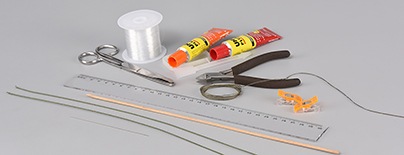Allow your creativity to blossom and create a bouquet of flowers that will never wilt. The PRECIOSA PermaLux seed bead color pallet enables you to choose from a wide range of colors and to create a bouquet of multihued flowers with stems.
She is able to switch from luxurious and extravagant fashion show pieces to the preparation of hobby projects,
Learn MoreA 0.20mm nylon line; a thin needle; scissors; a metal wire with a diameter of 1 mm (florist's wire or stainless steel); snipping pliers according to the hardness of the wire; a ruler; a thread with a diameter of 0.30 mm (Belfil-S 50); glue for non-absorbent material (fast drying); pegs; a skewer

Share this project with your friends
This website uses cookies
PRECIOSA ORNELA, a.s. hereby informs you that its website uses cookies You can find more information about our cookies and how your data is processed in the privacy statement. We request your consent to use cookies specified below.